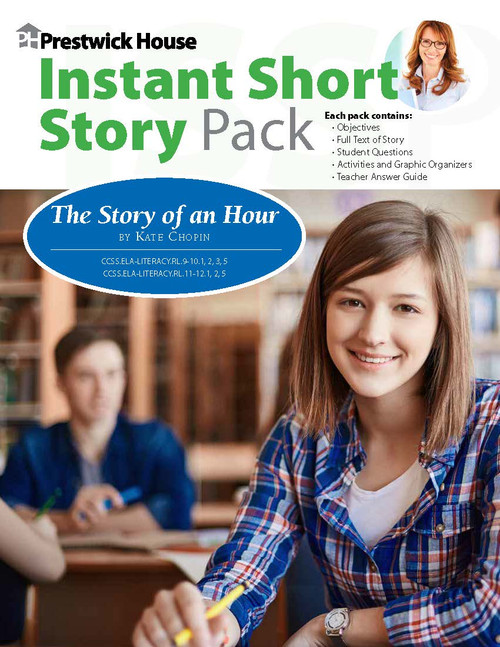Product Overview
Instant Resources for Rappaccini's Daughter by Nathaniel Hawthorne!
Whether you're looking for a short story to pair with the novel you're teaching, or you need a 2- to 3-day sub plan to use with the stories in your textbooks, Prestwick House Instant Short Story Packs go beyond basic comprehension to help students learn how to analyze literature.
Each downloadable pack addresses key skills through 5-10 standards-based analysis questions by guiding students through a series of scaffolding graphic organizers and in-class activities.
This Instant Short Story Pack for Rappaccini's Daughter by Nathaniel Hawthorne includes:
- Scaffolding graphic organizers and in-class activities
- Standards-based objectives
- Introduction and pre-reading notes
- Complete short story text
- Rigorous analysis questions
- Detailed teacher's answer guide
About Rappaccini's Daughter
Rappaccini's Daughter first appeared in the December 1844 issue of the United States Magazine and Democratic Review. In 1846, Hawthorne included it in his collection Mosses from an Old Manse.
The Visha Kanya, or “poison girl,” is a popular figure in Indian legend. These girls, brought up on poisons from infancy, were said to have been used to assassinate a ruler’s powerful enemies. Whether Beatrice, whose name means “the Blessed One,” represents this type of femme fatale is still a matter of debate.
Giovanni and Beatrice—in the garden created by her mad-scientist father—have been compared to Adam and Eve and to Romeo and Juliet. Some critics equate Beatrice with the woman (also named Beatrice) who led the poet Dante through the levels of Heaven in The Divine Comedy. Of course, most of these interpretations point out that Rappaccini’s garden is a corruption of the Garden of Eden and that Rappaccini’s Beatrice is more an anti-Blessed One who offers death instead of salvation.
Is Rappaccini—who created the toxic garden—God? Is he Satan, who corrupted the woman and, through her, destroyed the man? Is Baglioni an angel or a demon? A savior or a destroyer? What is a reader to make of the comment with which he closes the story? Is Beatrice truly innocent? A victim of her father’s mad curiosity? Or is she—like the ancient Indian Visha Kanya—a temptress and destroyer in her own right? And what are we to make of Giovanni?
When studying a puzzling story like “Rappaccini’s Daughter,” you do not have to embrace one interpretation and dismiss all the others. Neither do you have to come to any firm conclusion right now. The scholars themselves are still debating what the story means. Whatever conclusion you do come to, however, you will have to support with evidence from the text and from an accurate understanding of Hawthorne, his life, and the school(s) of thought he tended to explore in his writings.









